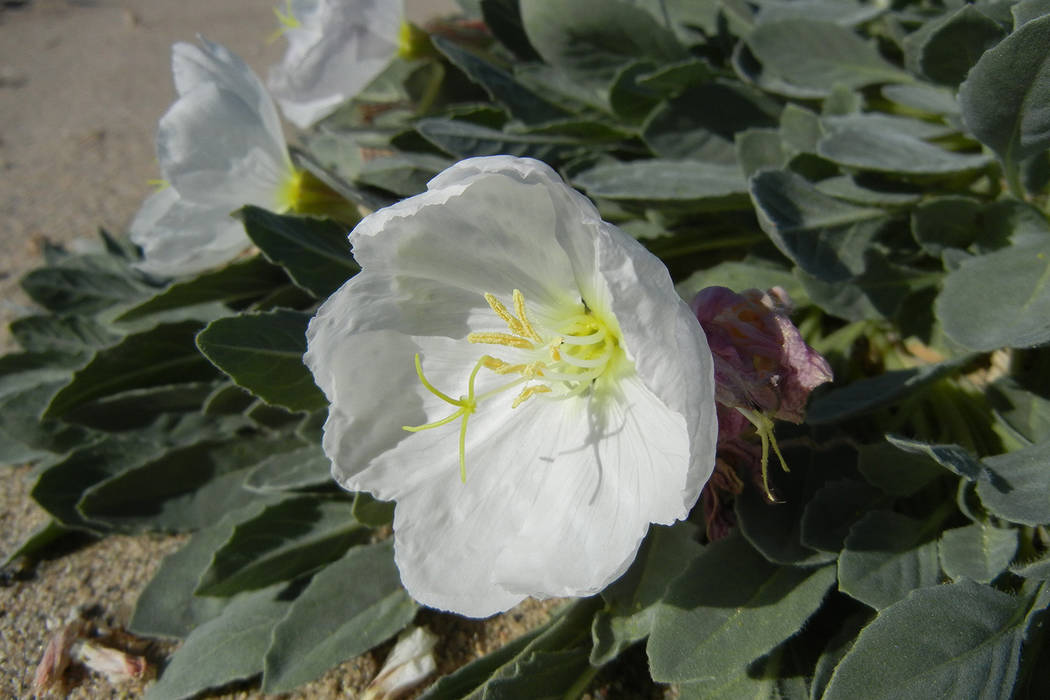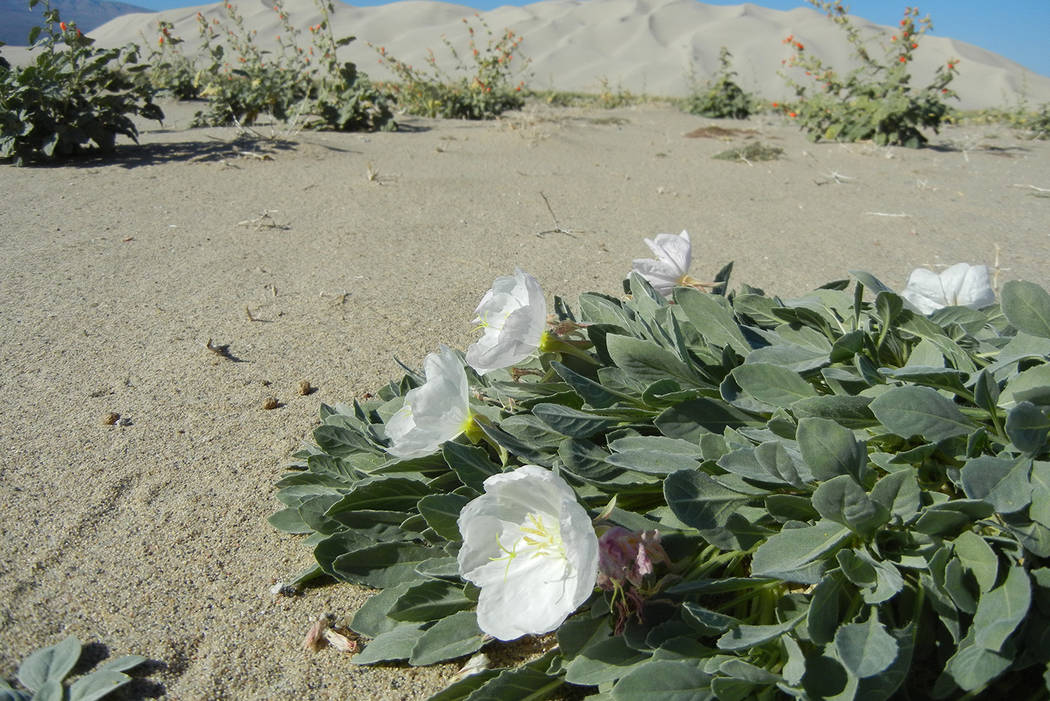Rare Death Valley plant removed from endangered species list



One rare desert plant has been removed from the endangered species list, and another has been “down-listed,” thanks to successful recovery efforts in Death Valley National Park.
The U.S. Fish and Wildlife Service announced Monday that it is “delisting” the Eureka Valley evening primrose and upgrading the status of the Eureka dune grass from endangered to the less-imperiled threatened status.
The rare plants only grow among a remote set of dunes in the northwestern part of the 3.4 million-acre park. They were listed as endangered in 1978, mostly due to off-road vehicle use and other recreational activities in their isolated habitat.
The Eureka Dunes, 220 miles northwest of Las Vegas, were officially closed to off-road vehicles in 1976, and protection of the area increased significantly in 1994, when the land became part of Death Valley National Park.
The portion of the park where the plants are found is now designated as a wilderness area, and impacts to the plants from off-road vehicles have been “virtually eliminated,” according to the Fish and Wildlife Service, which oversees protection of federally listed endangered species.
“It’s an exciting success story that both species are in less danger of extinction than they were a few decades ago,” Death Valley Superintendent Mike Reynolds said in a written statement. “This is due to things like wilderness protection, moving designated campsites away from the plants’ habitat, and adding signs to explain how to recreate at Eureka Dunes without harming the unique plants.”
The Eureka Valley evening primrose is a perennial that produces clusters of white or pink flowers in spring or summer, depending on conditions.
Eureka dune grass is a coarse, stiff-stemmed plant with sharp-pointed leaves that reaches 20 inches in height. It grows in wind-pollinated mounds, and the grass, though slow to establish itself, can live for decades.
In 2014, the Fish and Wildlife Service proposed the delisting of both plants, but scientific monitoring showed a slow decline in the largest population of dune grass, despite the removal of the primary threat to its survival.
The final rule updating the status of the two plant species will be published in the Federal Register on Tuesday, and the changes officially take effect March 29.
More than 2,300 species have been listed as threatened or endangered since the Endangered Species Act was signed into law in 1973.
According to the Fish and Wildlife Service’s Environmental Conservation Online System, the Eureka Valley evening primrose is the 36th species to be deemed recovered and delisted. Another 11 species have been removed from list after they went extinct.
Contact Henry Brean at hbrean@reviewjournal.com or 702-383-0350. Follow @RefriedBrean on Twitter.
Department of the Interior Fish and Wildlife Service by Las Vegas Review-Journal on Scribd
On the Web
The final rule delisting the Eureka Valley evening-primrose and upgrading the status of Eureka dune grass is available online by searching for “Docket No. FWS–R8–ES–2013–0131” at www.regulations.gov.













